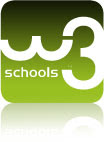THE OSI REFERENCEMODEL:
• The model was developed by the International Organisation for
Standardisation (ISO) in 1984. It is now considered the primary
Architectural model for inter-computer communications.
• The Open Systems Interconnection (OSI) reference model is a
descriptive network scheme. It ensures greater compatibility and
interoperability between various types of network technologies.
• The OSI model describes how information or data makes its way
from application programmes (such as spreadsheets) through a
network medium (such as wire) to another application programme
located on another network.
• The OSI reference model divides the problem of moving
information between computers over a network medium into
SEVEN smaller and more manageable problems
.
• This separation into smaller more manageable functions is known
as layering.
A LAYERED NETWORK MODEL:
• The OSI Reference Model is composed of seven layers, each specifying
particular network functions.
• The process of breaking up the functions or tasks of networking into layers
reduces complexity.
• Each layer provides a service to the layer above it in the protocol
specification
• Each layer communicates with the same layer’s software or hardware on
other computers.
• The lower 4 layers (transport, network, data link and physical —Layers 4,
3, 2, and 1) are concerned with the flow of data from end to end through
the network.
• The upper four layers of the OSI model (application, presentation and
session—Layers 7, 6 and 5) are orientated more toward services to the
applications.
• Data is Encapsulated with the necessary protocol information as it moves
down the layers before network transit.
THE SEVEN OSIREFERENCE MODELLAYERS:
 |
| osi mosel |
LAYERS STEP BY STEP
LAYER 7: APPLICATION
• The application layer is the OSI layer that is closest to the user.
• It provides network services to the user’s applications.
• It differs from the other layers in that it does not provide services to any
other OSI layer, but rather, only to applications outside the OSI model.
• Examples of such applications are spreadsheet programs, word processing
programs, and bank terminal programs.
• The application layer establishes the availability of intended
communication partners, synchronizes and establishes agreement on
procedures for error recovery and control of data integrity.
LAYER 6: PRESENTATION
• The presentation layer ensures that the information that the application
layer of one system sends out is readable by the application layer of
another system.
• If necessary, the presentation layer translates between multiple data
formats by using a common format.
• Provides encryption and compression of data.
• Examples :- JPEG, MPEG, ASCII, EBCDIC, HTML. LAYER
5: SESSION
• The session layer defines how to start, control and end conversations (called
sessions) between applications
.
• This includes the control and management of multiple bi-directional messages
using dialogue control.
• It also synchronizes dialogue between two hosts' presentation layers and
manages their data exchange.
• The session layer offers provisions for efficient data transfer.
• Examples :- SQL, ASP(AppleTalk Session Protocol).
LAYER 4: TRANSPORT
•The transport layer regulates information flow to ensure end-to-end
connectivity between host applications reliably and accurately.
• The transport layer segments data from the sending host's system and
reassembles the data into a data stream on the receiving host's system.
• The boundary between the transport layer and the session layer can be
thought of as the boundary between application protocols and data-flow
protocols. Whereas the application, presentation, and session layers are
concerned with application issues, the lower four layers are concerned
with data transport issues.
• Layer 4 protocols include TCP (Transmission Control Protocol) and UDP
(User Datagram Protocol).
LAYER 3: NETWORK
• Defines end-to-end delivery of packets.
• Defines logical addressing so that any endpoint can be identified.
• Defines how routing works and how routes are learned so that the
packets can be delivered.
• The network layer also defines how to fragment a packet into smaller
packets to accommodate different media.
• Routers operate at Layer 3.
• Examples :- IP, IPX, AppleTalk.
DEVICE USED ON THIS LAYER :ROUTERS, THIRD LAYER SWITCHS.
LAYER 2: DATA LINK
• The data link layer provides access to the networking media and physical
transmission across the media and this enables the data to locate its
intended destination on a network.
• The data link layer provides reliable transit of data across a physical link
by using the Media Access Control (MAC) addresses.
• The data link layer uses the MAC address to define a hardware or data
link address in order for multiple stations to share the same medium and
still uniquely identify each other.
• Concerned with network topology, network access, error notification,
ordered delivery of frames, and flow control.
• Examples :- Ethernet, Frame Relay, FDDI.
DEVICE USED ON THIS LAYER: BRIDGE,SWITCH.
LAYER 1: PHYSICAL
• The physical layer deals with the physical characteristics of the
transmission medium.
• It defines the electrical, mechanical, procedural, and functional
specifications for activating, maintaining, and deactivating the physical
link between end systems.
• Such characteristics as voltage levels, timing of voltage changes, physical
data rates, maximum transmission distances, physical connectors, and
other similar attributes are defined by physical layer specifications.
• Examples :- EIA/TIA-232, RJ45, NRZ.
DEVICES USED ON THIS LAYER: REPETER, HUB, TRANSRECIVER MEDIA CONVERTER.


Post a Comment
have you a any doubt then tell and if you want some topic then please tell .